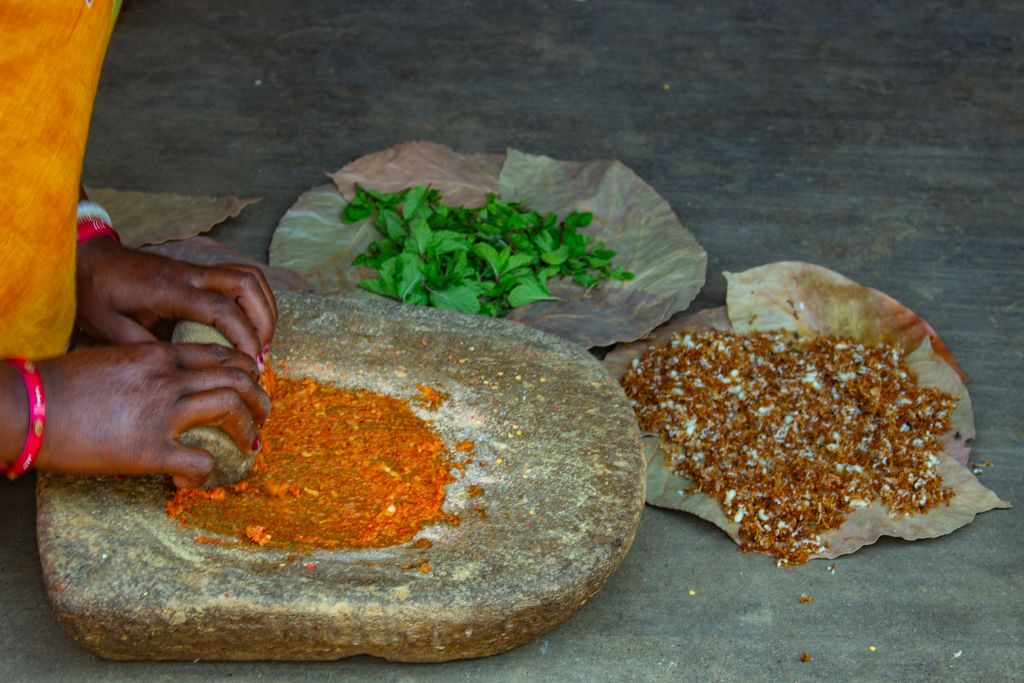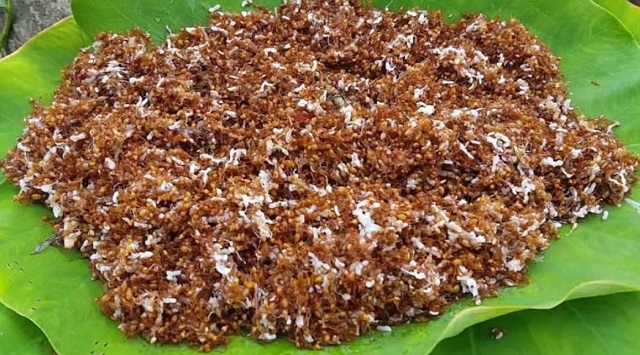Mayurbhanj’s Kai Chutney Continues To Tantalize Taste Buds
Known as "Kai Chutney" among the community, this spicy treat is made using red weaver ants, or Oecophylla smaragdina as they are scientifically named.
Nestled in the heart of the Mayurbhanj district of Odisha, there exists a centuries-old culinary history. Known as “Kai Chutney” among the community, this spicy treat is made using red weaver ants, or Oecophylla smaragdina as they are scientifically named. These ants, which are notorious for their excruciating sting, are collected from Mayurbhanj’s verdant woods, which include the well-known Similipal forests, Asia’s second-largest biosphere.
Prestigious GI Tag
On January 2, 2024, the red ant chutney received a significant accolade—the Geographical Indication (GI) tag. This recognition highlights the uniqueness and regional identity of the culinary creation, adding to its cultural and economic significance.
The Preparation
For years, the Mayurbhanj tribal families have made a living by gathering and distributing these amazing insects and their delectable chutneys. After being meticulously removed from their nests and cleaned, the ants and their eggs are used as key components in the chutney. The flavour of “Kai Chutney” is derived from a perfectly ground mixture of salt, ginger, garlic, and chilies.

Health Benefits
In addition to its unique flavour, red ant chutney is well known for its possible health advantages. This dish packs a nutritious punch with iron, magnesium, potassium, calcium, zinc, protein, and vitamin B-12. Furthermore, it is believed to support the growth of a strong nervous system and brain, which may help treat conditions like depression, tiredness, and memory loss.
In the worldwide conversation on sustainable cuisine, there has been an increased focus on the consumption of insects by humans. Research indicates that when it comes to protein sources, insects—like red weaver ants—may be a more sustainable option than conventional animals like cows. This culinary decision addresses greenhouse gas emission problems by supporting the creation of a sustainable food system and having less of an adverse effect on the environment.
While Mayurbhanj is proud of its red ant chutney, Jharkhand and Chhattisgarh are two more eastern Indian states with comparable culinary customs. The richness and diversity of Indian cuisine are reflected in the broad availability of these distinctive creations.
To sum up, the awarding of a Geographical Indication designation to Mayurbhanj’s red ant chutney not only honours a culinary custom but also highlights the cultural, economic, and environmental aspects of this exceptional culinary treat. “Kai Chutney” is a sign of sustainable and culturally rich culinary traditions in the heart of India, while also continuing to tantalise taste senses.

